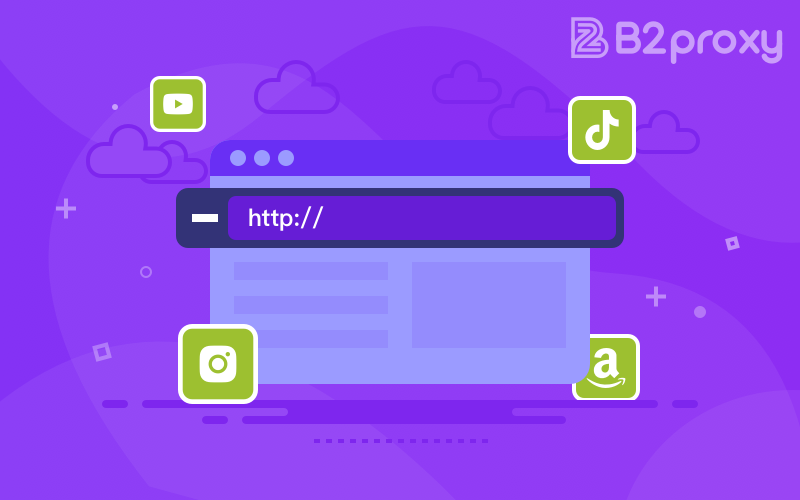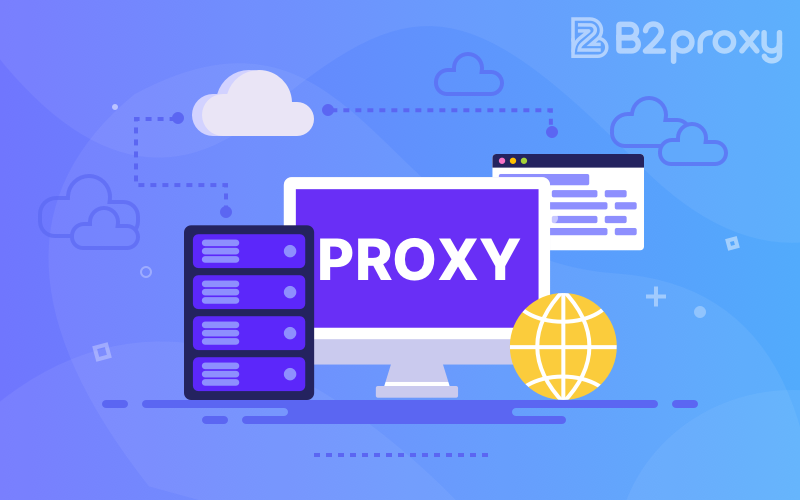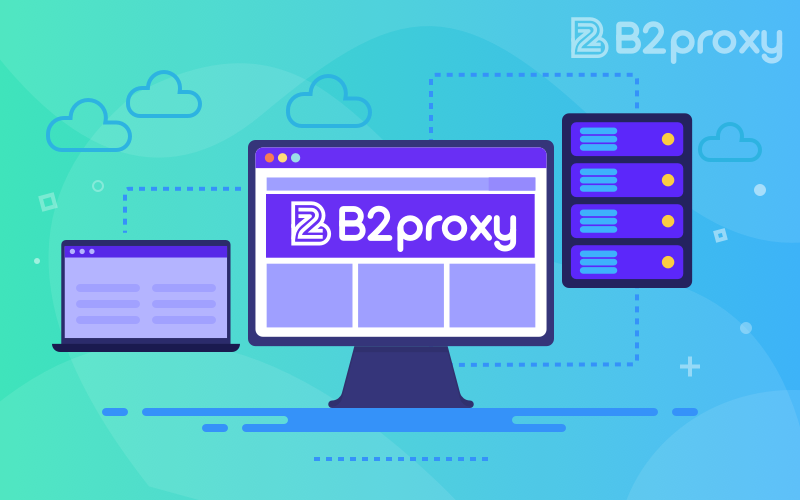What is Data Collection? A Deep Dive into the Concept and Application of Data Collection
 July 30.2025
July 30.2025

<p style="margin: 4px 0px; font-family: 等线; font-size: 16px; line-height: 2em;"><span style="letter-spacing: 0px; vertical-align: baseline; font-size: 16px;">In the era of information, data has become an essential driving force for business decisions, market analysis, product optimization, and enhancing user experiences. Whether it's e-commerce platforms, financial institutions, or research organizations, data collection has become an indispensable foundation in every industry. This article will provide a detailed explanation of data collection's definition, methods, and key applications across industries, helping you better understand its importance in business operations and technology development.</span></p><h3 class="paragraph text-align-type-left tco-title-heading 3" style="line-height: 2em;"><span style="letter-spacing: 0px; vertical-align: baseline; font-size: 16px;">What is Data Collection?</span></h3><p style="margin: 4px 0px; font-family: 等线; font-size: 16px; line-height: 2em;"><span style="letter-spacing: 0px; vertical-align: baseline; font-size: 16px;">Data collection refers to the process of gathering raw data from various sources through different methods, tools, and techniques. Data collection can be carried out in various ways, including manual collection, sensor-based collection, online scraping, and API interfaces. The goal of data collection is to collect and store information relevant to specific needs, for subsequent analysis, research, decision-making, etc.</span></p><p style="margin: 4px 0px; font-family: 等线; font-size: 16px; line-height: 2em;"><span style="letter-spacing: 0px; vertical-align: baseline; font-size: 16px;">In the online world, data collection often involves automating the process of scraping data from various websites, applications, and databases through crawler technology, proxy IPs, and API interfaces. The collected data can include text, images, videos, audio, and other formats, which can then be organized, cleaned, and analyzed.</span></p><h3 class="paragraph text-align-type-left tco-title-heading 3" style="line-height: 2em;"><span style="letter-spacing: 0px; vertical-align: baseline; font-size: 16px;">Common Methods of Data Collection</span></h3><p style="margin: 4px 0px; font-size: 16px; font-family: 等线; line-height: 2em;"><span style="font-size: 16px;">1. <span style="font-size: 15px; font-weight: bold; letter-spacing: 0px; vertical-align: baseline;">Web Scraping</span></span></p><p style="margin: 4px 0px; font-family: 等线; font-size: 16px; line-height: 2em;"><span style="font-size: 15px; letter-spacing: 0px; vertical-align: baseline;">Web scraping is one of the most common methods of data collection. By using crawler technology, automated programs access target websites and extract the required data from the pages. The crawler simulates user behavior to gather text, images, tables, and other information, converting it into usable data.For example, price monitoring on e-commerce platforms, real-time information scraping from news websites, and social media sentiment monitoring can all be achieved through web scraping technology.</span></p><p style="margin: 4px 0px; font-size: 16px; font-family: 等线; line-height: 2em;"><span style="font-size: 16px;">2. <span style="font-size: 15px; font-weight: bold; letter-spacing: 0px; vertical-align: baseline;">API Interface Collection</span></span></p><p style="margin: 4px 0px; font-family: 等线; font-size: 16px; line-height: 2em;"><span style="font-size: 15px; letter-spacing: 0px; vertical-align: baseline;">Many websites and applications provide API interfaces that allow external systems to retrieve data in a standardized manner. API interfaces typically have well-defined data formats and access restrictions, making them ideal for obtaining structured data. For example, social media platforms like Twitter, Facebook, and Instagram provide open APIs for users to retrieve posts, comments, likes, and other data.The advantage of API interface collection is that the data is usually structured, making it efficient to collect and providing more accurate results.</span></p><p style="margin: 4px 0px; font-size: 16px; font-family: 等线; line-height: 2em;"><span style="font-size: 16px;">3. <span style="font-size: 15px; font-weight: bold; letter-spacing: 0px; vertical-align: baseline;">Sensor and IoT Collection</span></span></p><p style="margin: 4px 0px; font-family: 等线; font-size: 16px; line-height: 2em;"><span style="letter-spacing: 0px; vertical-align: baseline; font-size: 16px;">In IoT (Internet of Things) applications, data collection is often done via sensors or smart devices. For example, smart home devices, medical monitoring devices, and intelligent transportation systems rely on data collection to gather real-time information about device status and environmental parameters. This method is not only suitable for fixed scenarios but can also be used for large-scale real-time monitoring.</span></p><p style="margin: 4px 0px; font-size: 16px; font-family: 等线; line-height: 2em;"><span style="font-size: 16px;">4. <span style="font-size: 15px; font-weight: bold; letter-spacing: 0px; vertical-align: baseline;">Manual Collection</span></span></p><p style="margin: 4px 0px; font-family: 等线; font-size: 16px; line-height: 2em;"><span style="letter-spacing: 0px; vertical-align: baseline; font-size: 16px;">Manual collection involves gathering data through human efforts, usually in scenarios where automation is not feasible, such as surveys, market research, or user interviews. While manual collection tends to have higher accuracy, it is less efficient and limited by human resources.</span></p><h3 class="paragraph text-align-type-left tco-title-heading 3" style="line-height: 2em;"><span style="letter-spacing: 0px; vertical-align: baseline; font-size: 16px;">Application Areas of Data Collection</span></h3><p style="margin: 4px 0px; font-size: 16px; font-family: 等线; line-height: 2em;"><span style="font-size: 16px;">1. <span style="font-size: 15px; font-weight: bold; letter-spacing: 0px; vertical-align: baseline;">Market Research</span></span></p><p style="margin: 4px 0px; font-family: 等线; font-size: 16px; line-height: 2em;"><span style="letter-spacing: 0px; vertical-align: baseline; font-size: 16px;">Data collection enables businesses to obtain important information about competitors, industry trends, and user behavior. For example, by scraping product prices, sales volumes, and user reviews from e-commerce platforms, businesses can analyze market dynamics and optimize pricing strategies.</span></p><p style="margin: 4px 0px; font-size: 16px; font-family: 等线; line-height: 2em;"><span style="font-size: 16px;">2. <span style="font-size: 15px; font-weight: bold; letter-spacing: 0px; vertical-align: baseline;">SEO Optimization and Analysis</span></span></p><p style="margin: 4px 0px; font-family: 等线; font-size: 16px; line-height: 2em;"><span style="letter-spacing: 0px; vertical-align: baseline; font-size: 16px;">During SEO optimization, data collection helps analyze search engine rankings, keyword performance, and competitors' optimization strategies. Companies can use data collection to monitor search results in real-time, identify potential traffic growth opportunities, and adjust SEO strategies.</span></p><p style="margin: 4px 0px; font-size: 16px; font-family: 等线; line-height: 2em;"><span style="font-size: 16px;">3. <span style="font-size: 15px; font-weight: bold; letter-spacing: 0px; vertical-align: baseline;">Financial Analysis and Risk Control</span></span></p><p style="margin: 4px 0px; font-family: 等线; font-size: 16px; line-height: 2em;"><span style="letter-spacing: 0px; vertical-align: baseline; font-size: 16px;">In the financial industry, data collection is used to gather real-time stock market data, economic indicators, and company financial reports to assist analysts in making investment decisions. By collecting data from social media and news websites, businesses can also monitor market sentiment and predict stock market fluctuations and risks.</span></p><p style="margin: 4px 0px; font-size: 16px; font-family: 等线; line-height: 2em;"><span style="font-size: 16px;">4. <span style="font-size: 15px; font-weight: bold; letter-spacing: 0px; vertical-align: baseline;">Social Media Monitoring</span></span></p><p style="margin: 4px 0px; font-family: 等线; font-size: 16px; line-height: 2em;"><span style="letter-spacing: 0px; vertical-align: baseline; font-size: 16px;">Social media platforms are valuable resources for obtaining user feedback and brand sentiment. Through data collection, businesses can monitor brand discussions, user comments, and competitor activity in real-time, providing data support for marketing decisions.</span></p><p style="margin: 4px 0px; font-size: 16px; font-family: 等线; line-height: 2em;"><span style="font-size: 16px;">5. <span style="font-size: 15px; font-weight: bold; letter-spacing: 0px; vertical-align: baseline;">Content Recommendation and Personalization</span></span></p><p style="margin: 4px 0px; font-family: 等线; font-size: 16px; line-height: 2em;"><span style="letter-spacing: 0px; vertical-align: baseline; font-size: 16px;">Data collection also helps businesses understand user interests and behaviors, allowing them to optimize recommendation algorithms and provide personalized content and services. For example, video platforms collect data based on users' viewing history to recommend relevant content, while e-commerce platforms recommend products based on browsing behavior.</span></p><h3 class="paragraph text-align-type-left tco-title-heading 3" style="line-height: 2em;"><span style="letter-spacing: 0px; vertical-align: baseline; font-size: 16px;">Challenges in Data Collection and Solutions</span></h3><p style="margin: 4px 0px; font-family: 等线; font-size: 16px; line-height: 2em;"><span style="letter-spacing: 0px; vertical-align: baseline; font-size: 16px;">Despite its widespread application, data collection faces several challenges during execution, including:</span></p><p style="margin: 4px 0px; font-size: 16px; font-family: 等线; line-height: 2em;"><span style="font-size: 16px;">1. <span style="font-size: 15px; font-weight: bold; letter-spacing: 0px; vertical-align: baseline;">Anti-Scraping Mechanisms and IP Blocking</span></span></p><p style="margin: 4px 0px; font-family: 等线; font-size: 16px; line-height: 2em;"><span style="letter-spacing: 0px; vertical-align: baseline; font-size: 16px;">Many websites and platforms implement anti-scraping mechanisms to prevent automated programs from frequently collecting data. These measures may include limiting IP access frequency, requiring CAPTCHA verification, or detecting user behavior patterns. To address this challenge, businesses can use proxy IPs, dynamically switch IP addresses, and avoid blocking, ensuring continuous data collection. <a href="https://www.b2proxy.com/use-case/web" target="_self">B2Proxy</a> offers stable proxy IP services, supporting IP rotation and high anonymity to ensure the success of your scraping tasks.</span></p><p style="margin: 4px 0px; font-size: 16px; font-family: 等线; line-height: 2em;"><span style="font-size: 16px;">2. <span style="font-size: 15px; font-weight: bold; letter-spacing: 0px; vertical-align: baseline;">Data Quality and Accuracy</span></span></p><p style="margin: 4px 0px; font-family: 等线; font-size: 16px; line-height: 2em;"><span style="letter-spacing: 0px; vertical-align: baseline; font-size: 16px;">Since collected data may come from multiple sources, ensuring data quality and accuracy becomes a critical issue. To ensure data accuracy, businesses need to employ cleaning, de-duplication, formatting, and validation methods, along with manual checks.</span></p><p style="margin: 4px 0px; font-size: 16px; font-family: 等线; line-height: 2em;"><span style="font-size: 16px;">3. <span style="font-size: 15px; font-weight: bold; letter-spacing: 0px; vertical-align: baseline;">Legal Compliance</span></span></p><p style="margin: 4px 0px; font-family: 等线; font-size: 16px; line-height: 2em;"><span style="letter-spacing: 0px; vertical-align: baseline; font-size: 16px;">Data collection must comply with relevant laws and regulations, including data privacy laws (such as GDPR) and the terms of use of websites. Whether through API interfaces or web scraping, businesses must ensure their data collection activities are legal.</span></p><h3 class="paragraph text-align-type-left tco-title-heading 3" style="line-height: 2em;"><span style="letter-spacing: 0px; vertical-align: baseline; font-size: 16px;">Conclusion</span></h3><p style="margin: 4px 0px; font-family: 等线; font-size: 16px; line-height: 2em;"><span style="letter-spacing: 0px; vertical-align: baseline; font-size: 16px;">Data collection is an indispensable part of modern information technology. It provides businesses with the opportunity to gain insights into markets, optimize products, enhance user experiences, and increase competitiveness. When conducting data collection, selecting the appropriate technical methods, tools, and proxy IP services is crucial to ensuring data quality, overcoming anti-scraping restrictions, and achieving long-term stable scraping.</span></p><p><br/></p>
You might also enjoy

High-Speed and Stable IP Proxy Brand Recommendations: Empowering Big Data Analysis and Mining
High-speed and stable IP proxies enhance big data analysis with secure, reliable connections, enabling faster data mining and smarter digital operations.
November 4.2025
IP Proxy Explained: Why E-commerce, Web Crawlers, and Ad Verification Rely on Static Residential Proxies
Static residential proxies offer stable, secure connections for e-commerce, data scraping, and ad verification across global online environments.
November 4.2025
Residential Proxy vs Mobile Proxy: Which Is Better for Data Collection?
Compare residential and mobile proxies to find the best fit for data collection. Learn how each type impacts stability, anonymity, and scraping performance.
November 3.2025







